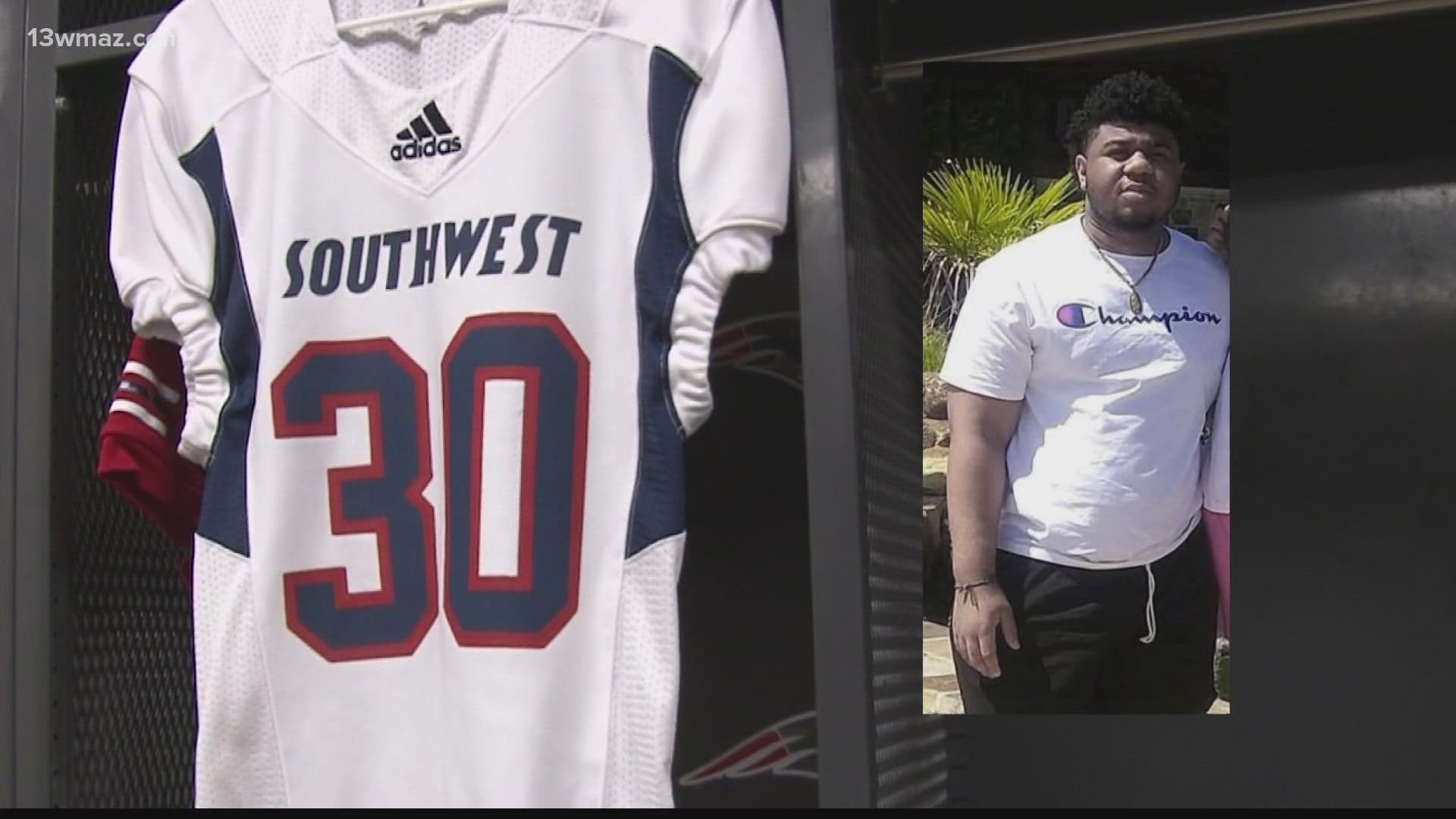MACON, Ga. — A second Southwest High School Football coach is now on leave while Bibb County Schools investigate a player's death.
15-year-old Joshua Ivory collapsed at practice on July 26 and later died in a Macon hospital. Authorities are still working to determine how Ivory died and if this was a heat-related death.
Ivory's death has lead to concerns about players' safety on the field with hot summer temperatures.
We spoke to University of Georgia kinesiology professor Bud Cooper, who advised Georgia High School Athletic Association (GHSA) on their latest policies concerning practicing in the heat with high school sports.
Almost 10 years ago, GHSA updated their guidelines, setting rules on when and how high schools can practice during high heat and humidity.
It's all measured by WBGT--that stands for the Wet Bulb Globe Temperature.
"As a means of which to assess how the environment, especially in hot climates, is stressful to individuals who are participating in activities," Cooper said.
It's similar to heat index but measures more components including radiant heat.
"That is the effect of the sun shining on those surfaces, heating that up on those surfaces data. We need to take that into account when we're thinking about individuals engaged in activity in the outside world," Cooper said.
It's also measured differently than the heat index.
"For me to tell you the WBGT is 86, you may go, 'OK...that's not so bad,' but in reality, it is," Cooper said.
Coaches use the measurement to help protect athletes from having heat exhaustion or even a heat stroke.
"It's 100% preventable if you do the right things," Cooper said.
Cooper says they studied trends for three years to help GHSA set these guidelines.
"Because of the trends that we saw, we needed to have the student athletes go through a five-day acclimatization, and they didn't complete that five-day acclimatization, they couldn't go into practice," Cooper said.
Using those trends, they set rules based on WBGT ranges.
"Each level there are gradients of what you can or cannot do, the length of practice is allowed, how many rest breaks allowed, how many hydration breaks you have to have, and the length of those breaks. It's very clear cut. You can't construe on any of those," Cooper said.
For instance, if the WBGT is between 90 and 92, practice can't last longer than an hour, players can't wear protective equipment, and coaches must give players 20 minutes of rest breaks during that hour.
If it gets above 92, coaches must cancel practice, according to the GHSA rules.
Cooper added that the GHSA also requires that a cold tub is available on site for players if the WBGT is over 86.
"So in the event that an athlete does collapse, succumb into heat stroke, whatever it might be, they have a cold tub right there, 50 degrees, immerse them in there, and the individual stays there until their body temperature is now below 102," Cooper said.
According to the policy, if schools violate those rules, they can be fined between $500 to $1,000
We reached out to Bibb County Schools to see if athletic officials recorded the WBGT the day Ivory collapsed and later died. We also asked to see what protocols were put in place because of the heat.
They said our station must file a records request to get that information. We filed the records request, and we'll report what we learn.
Coroner Leon Jones says it could be two months or more until the Georgia Bureau of Investigation completes an autopsy report determining how the 15-year-old died.

